The banshee is a supernatural being in Irish folklore. She is often depicted as a female spirit or fairy who appears as an omen or harbinger of death.
The belief in banshees has been an integral part of Irish folklore and mythology for centuries, adding an air of mystery and superstition to the tales of the Emerald Isle. While banshees are specific to Irish folklore, similar death omens and spirits can be found in other cultures worldwide, each with their own unique characteristics and names.
Table of Contents
What is the Banshee?
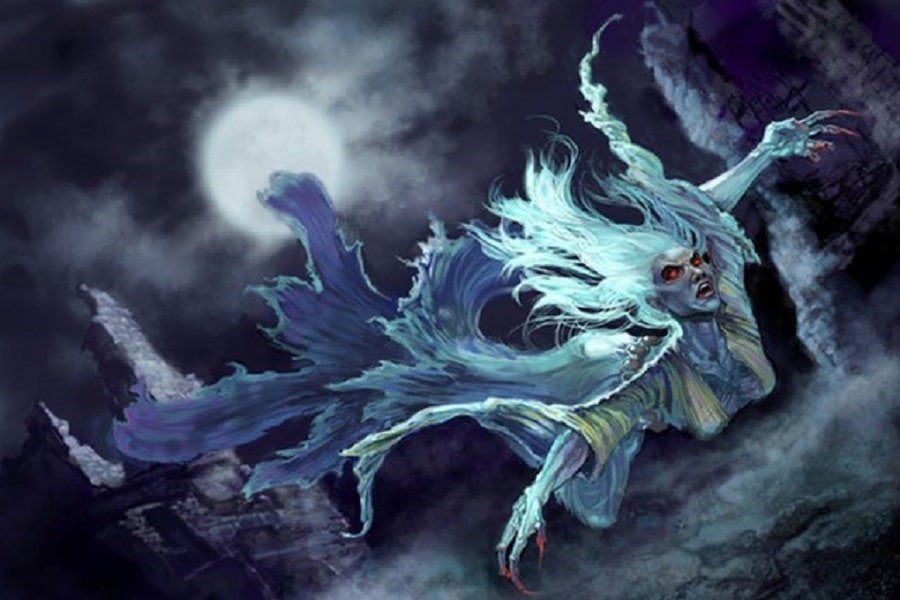
The Irish countryside is dotted with tumuli, or earthen mounds which in Old Irish were called sídhe (pronounced “she”). These earthen mounds were barrows – grave sites – some of which date as far back as the Neolithic Age.
These sídhe were associated with the fairy folk – the mythicized Tuatha Dé Danann, who had been supplanted by the wave of immigrants known as the Milesians (the ancestors of the Gaels who occupy Ireland today) in about 1000 B.C.E. Legend says that the Tuatha Dé Danann – who had long been considered magical beings – retreated underground, and the sídhe were among the remaining gateways to their hidden kingdom.
Thus, they became the aes sídhe – the people of the mounds – and these female spirits became the bean sídhe, or the women of the mounds. And while that would generally describe any females among the fairy folk, the banshee occupies a much more specific role which sets them apart.
The Harbinger
The banshee acts as a warning of death in a family. According to Irish folklore, the banshee is said to be heard wailing mournfully or singing a lament (referred to as “keening”) when someone in the family is either about to die or has already died.
This can occur even when the death happens far away, and news has not yet reached the family. And when the person is especially holy or important, multiple banshees may wail for their passing.
However, banshees don’t just presage deaths – though that is their most common function. Banshees have also been known to act as an omen of other tragedies or misfortunes as well, particularly those of significance.
The banshee of the O’Donnell family is said to cry for all the misfortunes the family will ever have. And so-called “banshee chairs” – wedge-shaped rocks found across Ireland – are said to be places where a banshee will sit and cry for general misfortunes when there is no death to announce.
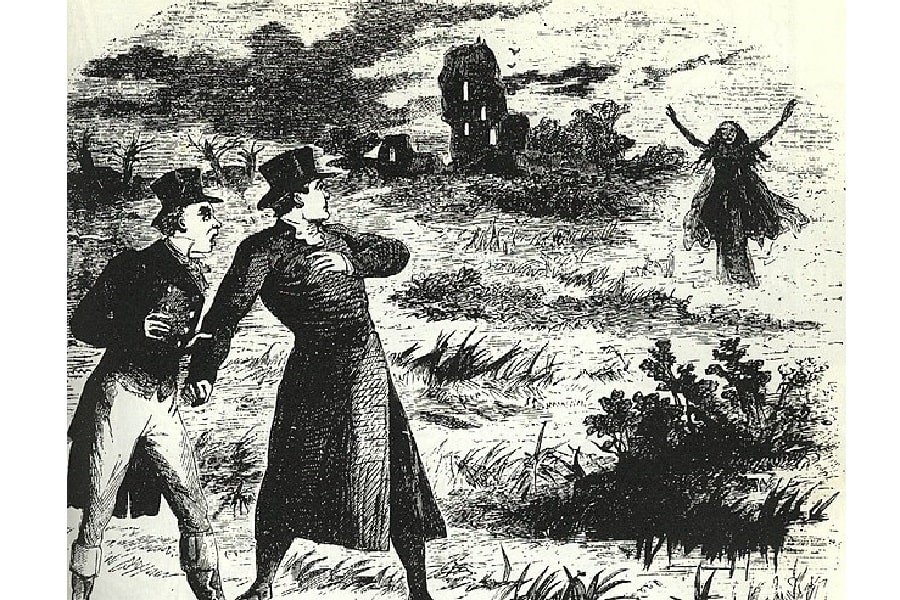
Depictions of the Banshee
All banshees are female, but beyond that detail, there is a great deal of variation in how they can appear. And while the banshee is often heard but not seen, there is still a range of descriptions to choose from.
She might be a beautiful woman in a shroud, wandering the countryside or crouched by the road. Or she could be seen as a pale woman with long red or silver hair.
While the banshee is often seen as young and lovely, she can just as well appear as a mature or old woman. They may be frightening crones with either long white or gray hair, wearing a green dress, or sometimes dressed all in black with a veil. And young or old, their eyes may be a terrifying red.
In some folk tales, the banshee appears more exotic, reflecting their fairy nature. Some banshees are said to be unnaturally tall, while others are described as tiny – as little as a foot tall in some cases.
They might be seen as a shrouded figure flying by in the moonlight. There are even accounts of a banshee appearing as a headless woman, naked from the waist up, carrying a bowl of blood. In other accounts, the banshee may take fully non-human forms, appearing as an animal such as a crow, weasel, or black dog.
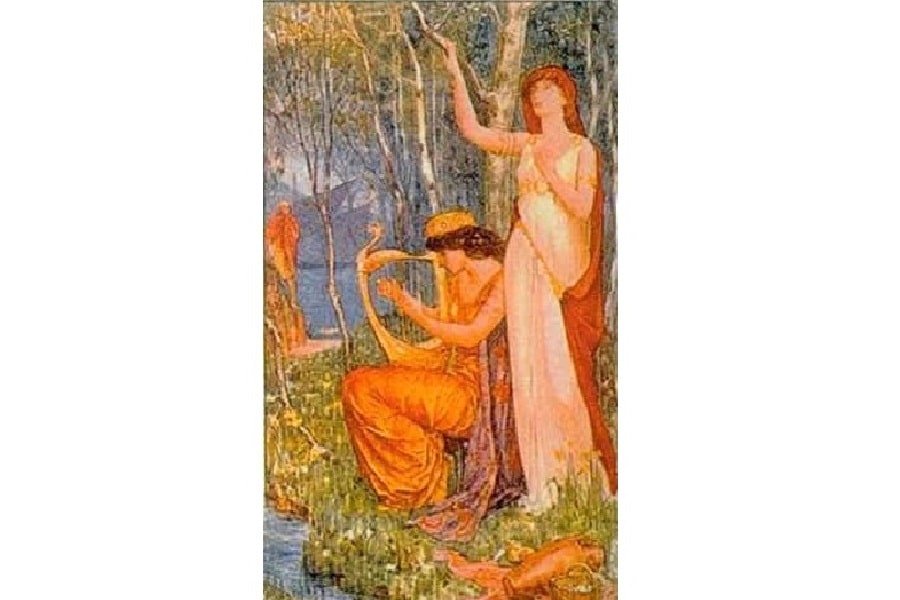
Mythological Connections
It is interesting to note that parallels can be drawn between the forms of the banshee and those of the Celtic goddess of war and death. The banshee’s depictions as everything from a maiden to a more matronly woman to an old crone correspond to the different forms of this triple goddess known as the Mórrigna.
READ MORE: 10 Gods of Death and the Underworld From Around the World
The trio is generally headed by the Morrigan (jealous wife of the Dagda, the Irish father-god) – who, interestingly enough, is said to wash the bloody clothes of those destined to die in battle. She is also said to often take the form of a crow – one of the animal forms also associated with banshees.
She has a notable appearance in “The Cattle-Raid of Regamna,” in which she encounters the legendary hero Cuchulain and serves a rather banshee-like role. In the story, the hero is awakened by a terrifying cry in the night, and – searching for its source – encounters a bizarre woman (the Morrigan) who predicts his death and transforms into a crow to escape him, thus revealing her true identity as a goddess.
The other members of the trio are usually the goddesses Badb (a war goddess who also appears as a crow and presages death with a wailing cry) and Macha (a goddess associated with land, fertility, and war). This lineup is not consistent, however, and the Mórrigna has been associated with a few different pagan goddesses – and the Morrigan herself has been depicted as a triad rather than a single goddess.
But whatever the exact makeup of the Mórrigna, the maiden/mother/crone aspect of it certainly connects to the various descriptions of banshees. And the depiction of these goddesses predicting or warning of death is a solid link to the banshee mythology.
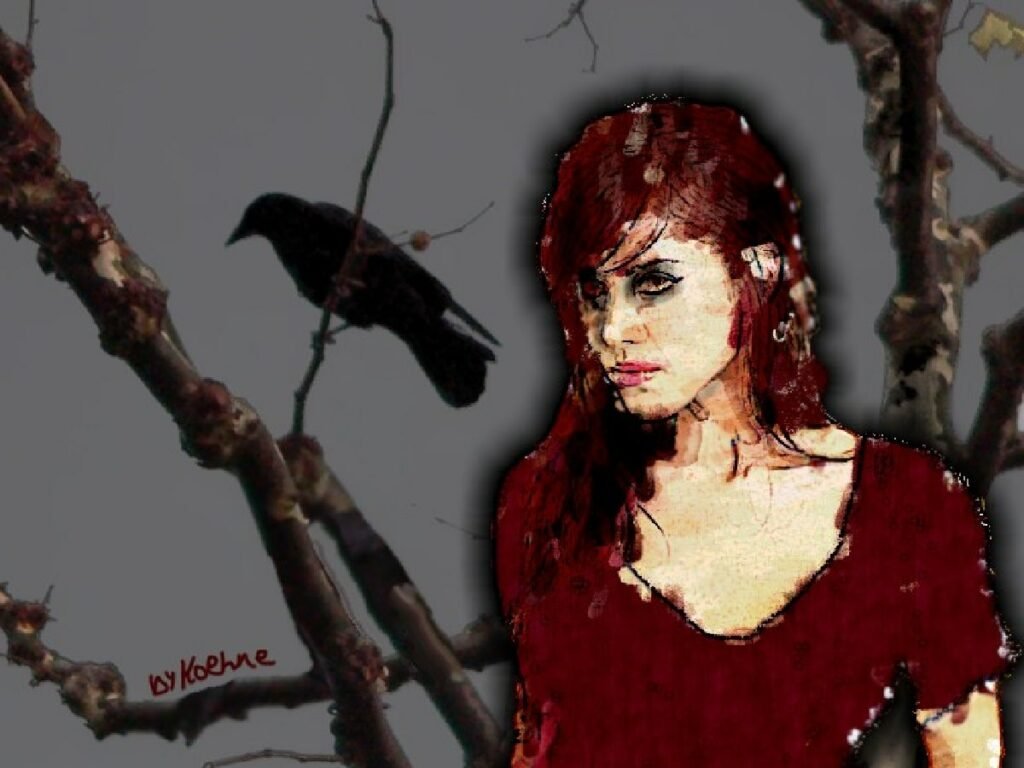
Keening
The banshee’s cry is known as caoine, or keening, a tradition that harkens back as far as the 8th century, though it’s not strictly unique to Ireland. Wailing and singing at burials are found in funeral rites from ancient Rome to China. Notably, there is an ancient custom called the oppari in areas of Southern India, in which women relatives of the deceased wail and sing a largely improvised song that is both lamentation and eulogy, which very closely parallels the Irish tradition of keening.
READ MORE: Ancient Civilizations Timeline: 16 Oldest Known Cultures From Around The World
Originally, bards (traditional Irish poets and storytellers) would sing lamentations at funerals. In time, the bard was replaced with hired “keening women” who would wail and sing for the deceased, and while the bards’ songs were generally prepared and structured, the keening was more improvised within the confines of a few standard, traditional motifs.
Keening faded from prominence as the 20th century came, and most of the authentic keening songs didn’t survive into the modern age. A precious few have been preserved, however.
One – a keening song for a dead child – was sung by a woman named Kitty Gallagher for the ethnomusicologist Alan Lomax in the 1950s. It can be heard online – and listening to it gives one just the faintest idea of what it might be like to hear a banshee sing somewhere out in the black night.
Local Songs
Just as the keening of mortal mourners, the keening of a banshee can be unique. But there are noted regional trends in the sounds made by these death heralds.
Those in Kerry are said to be pleasant songs, but at Rathlin Island (off the shore of Northern Ireland) the banshee’s song is a thin screech almost like that of an owl. And in Leinster, in the Southeast, the wail of a banshee is said to be so piercing it can shatter glass.
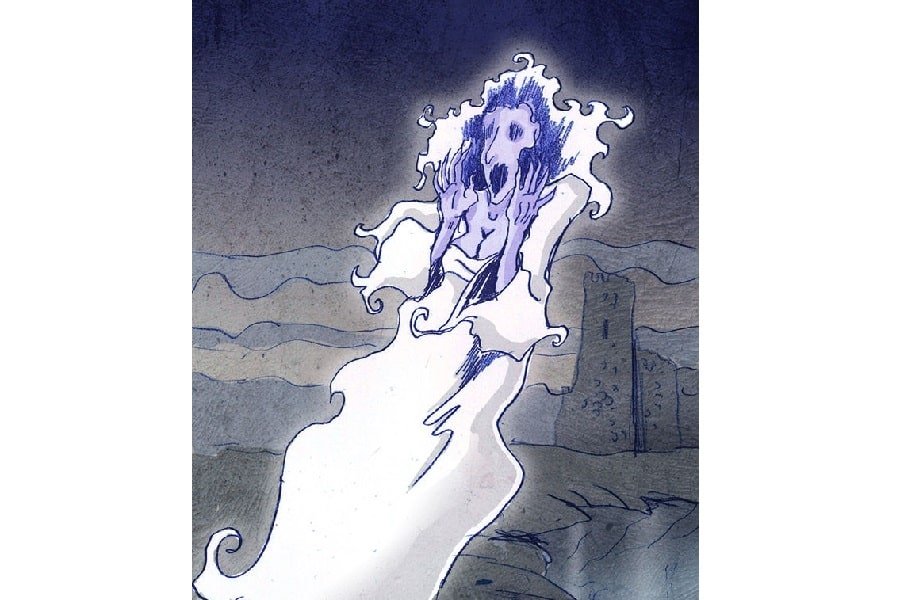
Family Heralds
But the banshee is not, traditionally, an omen of death for everyone. Rather, banshees are believed to be tied only to specific Irish families and lineages, with few exceptions.
The banshee is thought to be associated only with Gaelic families – that is, the descendants of the Milesians who last colonized the island. Chiefly, this includes the families with the Ó or Mc/Mac prefix, such as O’Sullivan or McGrath.
Some traditions are even more specific. By some accounts, only the five oldest families in Ireland – the O’Neills, the O’Briens, the O’Gradys, the O’Connors, and the Kavanaghs – have their own designated banshee. But other versions of the mythology grant other old families their own “family” banshee as well.
These family banshees – as one might expect from a figure talked about by generations of family members – can have a much more developed mythology than the norm. That of the O’Donnell family, for instance, was said to live on a rock overlooking the sea. And that of the O’Neill family, called Maveen, even had her own designated room in the family’s castle – where family members sometimes claimed to see an impression left in her bed.
And this close relationship doesn’t end at the water’s edge on the Emerald Isle. There have been accounts of the banshee’s wail being heard by the descendants of Irish immigrants to other countries, even after generations away from their original homeland.
But in practice, it seems the banshees are not as limited in who they sing to as tradition suggests. There are families, notably the Geraldines (an ancient Anglo-Norman family in Ireland), the Bunworth family (Anglo-Saxons of County Cork), and the Rossmores (a line of Barons in County Monaghan, of Scotch and Dutch descent), who – despite not being of Milesian heritage – are each believed to have their own banshee as well.
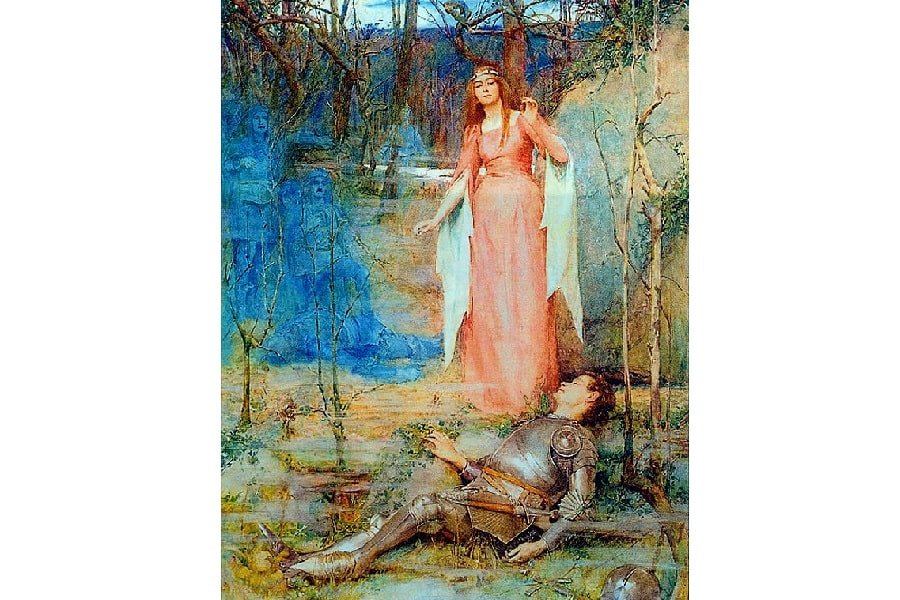
Not Always Friends of the Family
But just because a banshee is connected to a given family doesn’t mean that it’s a family friend. In different folk tales, banshees can be seen one of two ways – either as a spirit who mourns the dead and shares the sorrows of the family to whom they’re connected or as a hateful creature whose cries are a celebration of the suffering of their designated family.
The song of the friendly banshee is said to be a soft, mournful chant to announce or presage the death of a family member, and this banshee exists as a fellow mourner, grieving the deceased. The hateful banshee’s call, on the other hand, is a fiendish screech, a dark howl of delight for the oncoming tragedy.
And Not Restricted to Families
But banshees have been known to do more than just alert family members to an impending death. They’ve also been known to announce the deaths of significant persons regardless of their heritage or to announce death to outsiders rather than the family members of the deceased.
In 1801, Sir Jonah Barrington (then Chief of the British forces in Ireland) was awoken one night by a banshee at his window that either cried the name “Rossmore” three times or scratched it on the window sill. Robert Cuninghame, the first Baron Rossmore, was a close friend and had been one of Barrington’s guests that evening – and the following morning, Barrington learned that he had died in the night at just about the time of that ghostly visit.
And Irish legend says that thrice fifty queens wailed at the death of Cuchulainn – not named as banshees, but certainly matching the description. And a banshee-like woman was said to have warned James I of Scotland of his impending death at the instigation of the Earl of Atholl.

Variants of the Banshee
But the Irish are not the only people to have such death omens. There are very similar creatures found in nearby cultures that also predict or warn of a coming death.
In Scotland, for instance, there is the bean-nighe or washerwoman, often described as having one nostril, one tooth, and a duck’s webbed feet. She will be seen at streams or rivers, washing the bloody clothes of someone about to die (not unlike Morrigan’s washing of bloody clothes).
But the bean-nighe has an additional aspect not found in banshee lore. If one can sneak up on the washerwoman and catch her unseen, she is said to either answer any questions truthfully or sometimes even grant one or more wishes. It is also possible to change fate by having her stop washing the clothes of the soon-to-die.
Likewise, the Welsh Gwrach-y-Rhibyn, or Hag of the Mists, is said to approach the window of a person about to die and call their name. Usually invisible, the hag – a harpy-like creature with leathery wings – can sometimes be seen in the mists at crossroads or streams.
READ MORE: Harpies: Storm Spirits and Winged Women